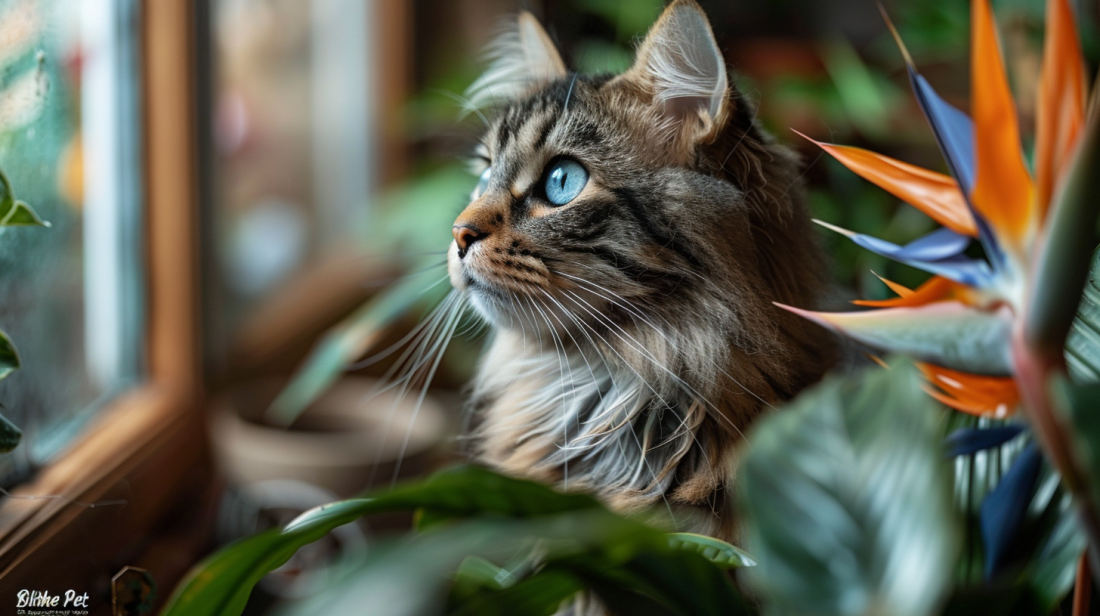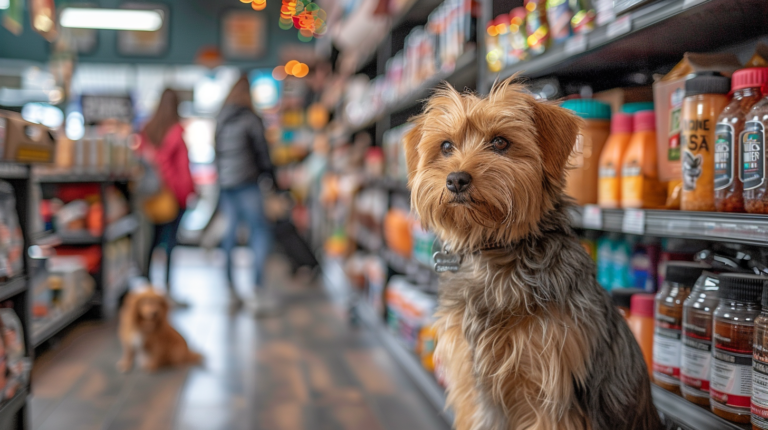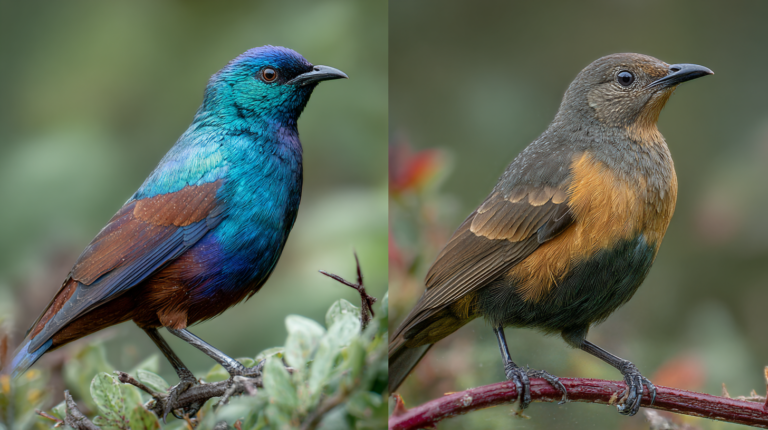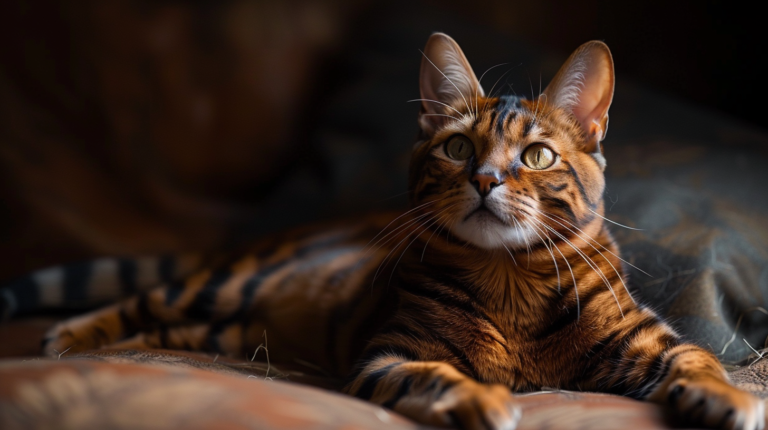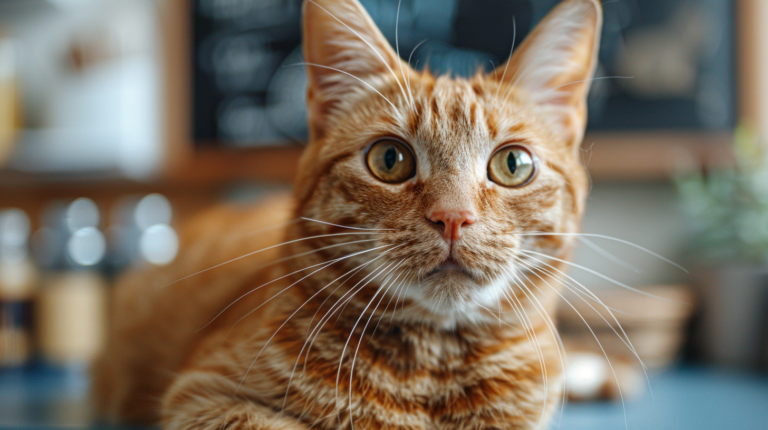Discover 6 crucial Bird of Paradise plant safety facts every pet owner needs to know. Learn symptoms, prevention strategies, and emergency response to protect your cats, dogs, and other pets from this beautiful but toxic houseplant.
Did you know that over 65% of American households own at least one pet, yet many pet owners remain unaware of the hidden dangers lurking in their beautifully decorated homes? The stunning Bird of Paradise plant, with its vibrant orange and blue flowers resembling exotic tropical birds, has become increasingly popular in home décor. However, this Instagram-worthy houseplant poses serious health risks to our beloved cats, dogs, and other companion animals.
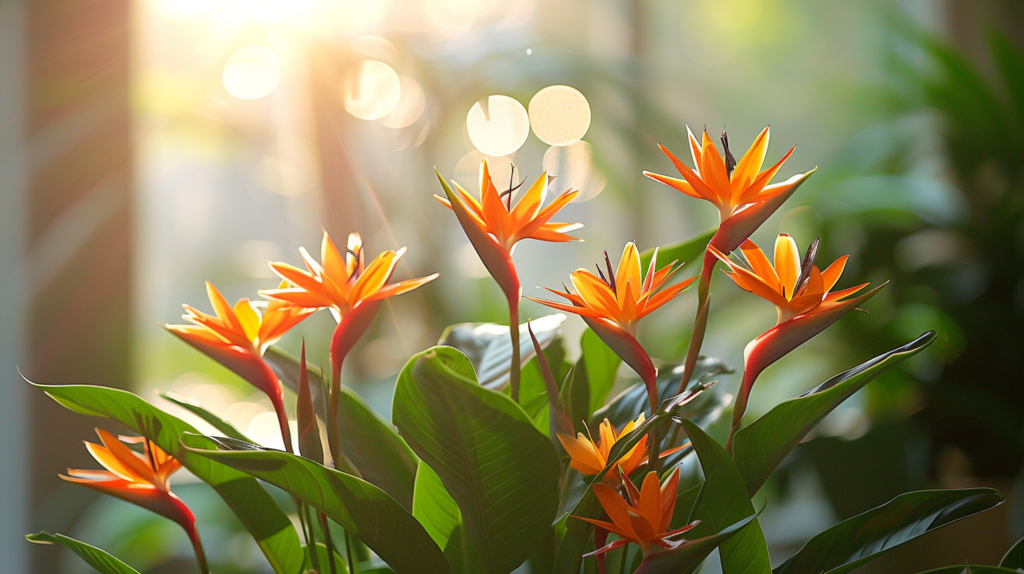
Whether you’re a seasoned plant parent or considering adding this tropical beauty to your collection, understanding the relationship between Bird of Paradise plants and pet safety is crucial. This comprehensive guide will reveal six essential facts that could potentially save your pet’s life, helping you create a beautiful yet safe environment for your furry, feathered, or scaled family members.
When I first brought home a stunning Bird of Paradise plant from a nursery in Austin, Texas, I was completely captivated by its dramatic foliage and exotic appearance. What I didn’t realize was that my curious tabby cat, Luna, would be equally fascinated – but for all the wrong reasons. That experience taught me invaluable lessons about plant safety that every pet owner should know.
Understanding Bird of Paradise Plants: Beauty with Hidden Dangers
The Bird of Paradise plant (Strelitzia reginae) belongs to a family of flowering plants native to South Africa. These striking plants have gained tremendous popularity among homeowners and interior designers due to their bold, architectural leaves and spectacular bird-like flowers. However, beneath their stunning exterior lies a concerning truth that every pet owner must acknowledge.
Bird of Paradise plants contain several toxic compounds, including hydrogen cyanide glycosides and tannins, which can cause significant health problems in pets. The entire plant is considered toxic, from the distinctive paddle-shaped leaves to the colorful flower heads that give the plant its name. Even small amounts of plant material can trigger adverse reactions in sensitive animals.
The toxicity level varies depending on the amount consumed, the size of the pet, and their individual sensitivity. While the plant isn’t typically fatal to healthy adult pets in small quantities, it can cause considerable discomfort and potentially serious complications, especially in puppies, kittens, elderly pets, or animals with existing health conditions.
Why Pets Are Attracted to Bird of Paradise Plants
Several factors make Bird of Paradise plants particularly appealing to curious pets. The large, textured leaves provide an interesting surface for cats to scratch or rub against, while the unusual shape and movement of the foliage can trigger hunting instincts. Dogs, especially puppies, may be drawn to chew on the thick stems and leaves due to their substantial texture.
The plant’s height and dramatic presence often make it a focal point in rooms, inadvertently drawing pet attention. Additionally, the slight rustling sound the large leaves make can attract cats who associate similar sounds with prey or interesting objects to investigate.
Table 1 – Markdown Version:
| Pet Type | Toxicity Level | Common Symptoms | Onset Time | Severity |
|---|---|---|---|---|
| Cats | Moderate to High | Drooling, vomiting, diarrhea | 30 minutes – 2 hours | Can be serious |
| Dogs | Moderate | Nausea, stomach upset, drooling | 1-3 hours | Usually mild to moderate |
| Birds | High | Respiratory distress, weakness | 15-45 minutes | Can be severe |
| Rabbits | High | Digestive issues, lethargy | 30 minutes – 1 hour | Potentially serious |
| Ferrets | Moderate to High | Vomiting, diarrhea, weakness | 30-90 minutes | Can be concerning |
Fact #1: All Parts of the Bird of Paradise Plant Are Toxic to Pets
One of the most critical facts every pet owner must understand is that no part of the Bird of Paradise plant is safe for animal consumption. Unlike some plants where only specific parts pose risks, every component of this tropical beauty contains potentially harmful compounds.
The leaves, which are the most accessible part of the plant to curious pets, contain the highest concentrations of toxic substances. The thick, waxy texture might seem appealing to pets who enjoy chewing, but even small nibbles can trigger digestive upset. The stems and roots also contain harmful compounds, though pets are less likely to access these parts under normal circumstances.
The distinctive flowers, while less commonly available on indoor plants, are equally dangerous. Pet birds are particularly vulnerable to the flower’s toxic effects due to their sensitive respiratory systems and faster metabolisms. Even the plant’s seeds, if they develop, contain concentrated toxins that can cause severe reactions.
Hidden Dangers in Plant Care
Even routine plant care can create unexpected hazards for pets. When pruning or repotting your Bird of Paradise plant, fallen leaves, stem cuttings, or soil particles can become accessible to pets. The plant’s sap, which may be released during trimming, can cause skin irritation in both pets and humans.
Water runoff from the plant’s pot can also contain trace amounts of toxic compounds, especially if the plant has been recently watered or fertilized. Pet owners should be mindful of where they place water collection trays and ensure pets cannot access standing water from plant care activities.
Fact #2: Symptoms Can Appear Rapidly and Vary by Pet Size
The onset and severity of symptoms from Bird of Paradise plant poisoning depend heavily on several factors, with pet size being one of the most significant. Smaller animals, including cats, small dogs, birds, and exotic pets, face higher risks due to their lower body weight and faster metabolisms.
Immediate symptoms typically include excessive drooling, which occurs as the pet’s body attempts to dilute and expel the toxic substances. This is often followed by nausea and vomiting, as the digestive system tries to reject the harmful plant material. Cats may also exhibit signs of oral irritation, including pawing at their mouth or reluctance to eat or drink.
Gastrointestinal symptoms usually develop within the first few hours and can include diarrhea, stomach cramping, and loss of appetite. More concerning symptoms may include lethargy, difficulty breathing, or coordination problems, which typically indicate a more severe reaction requiring immediate veterinary attention.
Early Warning Signs Pet Owners Should Monitor
Recognizing early warning signs can make the difference between a minor incident and a serious medical emergency. Changes in behavior, such as hiding, excessive vocalization, or restlessness, often precede more obvious physical symptoms. Pets may also show signs of discomfort by assuming unusual positions, such as stretching their neck or refusing to lie down normally.
Respiratory changes, including rapid breathing, panting (in cats), or open-mouth breathing in pets that don’t normally pant, are particularly concerning. These symptoms may indicate that the toxins are affecting the pet’s cardiovascular or respiratory systems, requiring immediate professional intervention.
For more expert pet care tips and product recommendations, visit BlithePet.com — your trusted source for pet wellness.
Fact #3: Young and Senior Pets Face the Highest Risk
Age plays a crucial role in determining how severely a pet may react to Bird of Paradise plant exposure. Puppies and kittens are particularly vulnerable due to their developing immune systems, smaller body size, and tendency to explore their environment through taste and chewing behaviors.
Young animals also have less developed liver and kidney function, making it harder for their bodies to process and eliminate toxins efficiently. This means that even small amounts of plant material that might cause only mild symptoms in an adult pet could result in serious complications in a puppy or kitten.
Senior pets face increased risks due to potentially compromised organ function and existing health conditions. Older animals may take longer to recover from poisoning incidents and are more likely to experience complications. Their reduced mobility might also mean they spend more time near floor-level plants, increasing exposure opportunities.
Breed-Specific Vulnerabilities
Certain breeds show increased sensitivity to plant toxins due to genetic factors or physical characteristics. Brachycephalic breeds (flat-faced dogs and cats) may experience more severe respiratory symptoms due to their already compromised breathing abilities. Small toy breeds and cats under 5 pounds require immediate veterinary attention even for suspected minor exposures.
Working breeds and high-energy dogs may also face unique challenges, as their active nature might lead them to consume larger quantities of plant material before owners notice the behavior. Additionally, some breeds have genetic predispositions to certain types of sensitivities that can exacerbate plant poisoning symptoms.
Table 2 – Markdown Version:
| Emergency Action | Time Frame | What to Do | What NOT to Do | When to Contact Vet |
|---|---|---|---|---|
| Immediate Response | 0-5 minutes | Remove plant material from mouth, rinse mouth with water | Do NOT induce vomiting unless instructed | Call immediately for guidance |
| Short-term Monitoring | 5-30 minutes | Monitor breathing, check gums, note symptoms | Do NOT give home remedies or medications | If symptoms worsen or pet shows distress |
| Transport Preparation | 30-60 minutes | Prepare for vet visit, gather plant sample | Do NOT wait to “see if it gets better” | Always – even if symptoms seem mild |
| Follow-up Care | 24-48 hours | Monitor appetite, bathroom habits, energy level | Do NOT assume pet is “fine” after initial recovery | If any symptoms return or new ones appear |
Fact #4: Safe Placement Strategies Can Prevent Most Incidents
Strategic placement of your Bird of Paradise plant can significantly reduce the risk of pet exposure while still allowing you to enjoy its tropical beauty. The key lies in understanding your pet’s behavior patterns, physical capabilities, and natural curiosities.
Height placement is one of the most effective prevention strategies. Bird of Paradise plants respond well to elevated positions, such as plant stands, tall tables, or hanging planters designed for larger plants. However, pet owners must consider their animals’ jumping and climbing abilities. Cats can easily reach surfaces up to 6 feet high, while some large dogs can access counter-height areas.
Room selection plays an equally important role in plant safety. Consider placing your Bird of Paradise plant in rooms where pets spend less supervised time, such as formal dining rooms, home offices, or guest bedrooms. Avoid high-traffic pet areas like family rooms, kitchens, or bedrooms where pets sleep.
Creating Physical Barriers
Physical barriers can provide additional protection without compromising your plant’s aesthetic appeal. Decorative plant cages, clear acrylic guards, or strategically placed furniture can create effective boundaries. Some pet owners successfully use decorative stones or pine cones around the plant’s base to discourage digging or investigation.
Glass plant terrariums or enclosed plant cabinets offer another solution, particularly for smaller Bird of Paradise varieties. These enclosures protect the plant from pet interference while creating an attractive display feature. Ensure adequate ventilation and lighting when using enclosed options.
Consider your pet’s daily routines when planning placement. Cats often follow sunbeam patterns throughout the day, while dogs may have preferred resting spots or travel paths through the house. Observing these patterns for a week before plant placement can help identify the safest locations.
Fact #5: Quick Action Can Save Your Pet’s Life
When pet exposure to Bird of Paradise plants occurs, the speed and appropriateness of your response can significantly impact the outcome. Having a clear action plan before an emergency occurs is essential for every pet owner who chooses to keep potentially toxic plants in their home.
The first critical step involves safely removing any remaining plant material from your pet’s mouth without causing additional stress or injury. Use a clean cloth or your fingers to gently sweep out visible plant pieces, being careful not to push material further back into the throat. Rinse the mouth with clean water if your pet will tolerate it, but never force water into an unwilling animal’s mouth.
Document everything you observe, including the amount of plant material consumed (estimate if necessary), the time of exposure, and any symptoms you notice. Take photos of the plant and any vomited material, as these can provide valuable information to veterinary professionals. Note your pet’s exact weight if known, as this affects treatment decisions.
Emergency Contact Preparation
Every pet owner should have emergency contact information readily available before incidents occur. This includes your primary veterinarian’s number, the nearest 24-hour emergency veterinary clinic, and the ASPCA Animal Poison Control Center (1-888-426-4435). Program these numbers into your phone and keep physical copies in easily accessible locations.
Prepare a pet emergency kit that includes a carrier or leash for safe transport, clean towels, a list of your pet’s current medications and health conditions, and your veterinarian’s contact information. Having these items ready can save precious minutes during an emergency.
Consider discussing plant toxicity scenarios with your veterinarian during routine visits. Understanding their specific protocols and preferences for handling poisoning cases can help you provide better information during emergency calls and follow instructions more effectively.
Fact #6: Prevention Is Always Better Than Treatment
The most effective approach to Bird of Paradise plant safety involves comprehensive prevention strategies rather than relying solely on emergency response plans. Creating a pet-safe environment requires ongoing vigilance and proactive planning that addresses multiple risk factors.
Regular plant maintenance plays a crucial role in prevention. Promptly remove fallen leaves, spent flowers, or pruned materials that might attract curious pets. Sweep the area around your plant regularly to eliminate small pieces that might be overlooked during casual cleaning. Consider the timing of plant care activities, performing maintenance when pets are crated, outside, or in other rooms.
Training and environmental enrichment can significantly reduce your pet’s interest in plants. Providing appropriate chew toys, scratching posts, or interactive feeders can redirect natural behaviors away from potentially dangerous plants. Consistent training using positive reinforcement can teach pets to avoid specific areas or items on command.
Alternative Plant Options for Pet Owners
Many pet owners discover that choosing pet-safe plants eliminates concerns while still providing the tropical aesthetic they desire. Several plants offer similar visual appeal to Bird of Paradise plants without the associated risks. Spider plants, Boston ferns, and rubber trees can provide lush greenery, while bird’s nest ferns offer interesting textures.
For those specifically drawn to the Bird of Paradise’s dramatic height and tropical appearance, consider large bamboo plants, fiddle leaf figs (though these have mild toxicity), or artificial alternatives that have become increasingly realistic. High-quality artificial plants can provide the desired aesthetic without any safety concerns.
Research thoroughly before introducing any new plant to your home. Even plants marketed as “pet-safe” can cause digestive upset in some sensitive animals, and individual pets may have unique sensitivities or allergies that aren’t commonly known.
Common Mistakes Pet Owners Make
Understanding frequent errors in Bird of Paradise plant safety can help you avoid potentially dangerous situations. One of the most common mistakes involves underestimating pets’ abilities to reach elevated plants. Many pet owners place plants on surfaces they believe are inaccessible, only to discover their cat’s remarkable jumping abilities or their dog’s determination to investigate interesting scents.
Another frequent error involves assuming that pets who have previously ignored plants will continue to do so. Changes in routine, new environmental factors, or simple curiosity can suddenly make previously uninteresting plants appealing to pets. Boredom, stress, or changes in diet can also influence a pet’s tendency to explore and taste new things.
Delayed response to suspected plant consumption represents a critical mistake that can worsen outcomes. Some pet owners adopt a “wait and see” approach, hoping that mild symptoms will resolve on their own. While minor exposures sometimes result in minimal symptoms, the unpredictable nature of plant toxicity makes immediate veterinary consultation the safest approach.
Misunderstanding “Natural” vs. “Safe”
Many pet owners incorrectly assume that natural plants pose less risk than synthetic products or processed foods. This misconception can lead to dangerous complacency around plant safety. Natural doesn’t equal safe – many of the most toxic substances known to pets occur naturally in plants, including the compounds found in Bird of Paradise plants.
Similarly, some pet owners believe that if a plant is safe for humans, it must be safe for pets. This assumption ignores the significant physiological differences between species. Pets metabolize substances differently than humans, and their smaller size means that quantities safe for people can be dangerous for animals.
When to Consult Your Veterinarian
Establishing clear guidelines for veterinary consultation helps ensure appropriate response to Bird of Paradise plant exposure incidents. Contact your veterinarian immediately if you observe your pet consuming any amount of plant material, regardless of how small the quantity appears. Professional guidance can help determine the appropriate level of concern and necessary actions.
Certain symptoms always warrant immediate veterinary attention, including difficulty breathing, severe vomiting or diarrhea, loss of coordination, seizures, or loss of consciousness. However, don’t wait for severe symptoms to develop – early intervention typically leads to better outcomes and may prevent serious complications.
Changes in normal behavior patterns, even subtle ones, should prompt veterinary consultation following potential plant exposure. This includes unusual hiding, excessive vocalization, reluctance to move, or changes in appetite or water consumption. Trust your instincts as a pet owner – you know your animal best and can often detect changes that others might miss.
Preparing for Veterinary Visits
When scheduling emergency visits related to Bird of Paradise plant exposure, provide complete information to help the veterinary team prepare appropriately. Describe the suspected amount consumed, time of exposure, your pet’s current symptoms, and any first aid measures you’ve already taken.
Bring a sample of the plant material if safely available, along with any photographed evidence of consumption or symptoms. Have your pet’s weight, current medications, and recent health history readily available. This information helps veterinarians make faster, more informed treatment decisions.
Table 3 – Markdown Version:
| Prevention Strategy | Effectiveness | Cost | Maintenance Required | Best For |
|---|---|---|---|---|
| Elevated Placement | High for dogs, Moderate for cats | Low | Minimal | Single-pet households |
| Physical Barriers | Very High | Moderate | Low | Multi-pet homes |
| Room Restriction | High | Low | None | Cats and small dogs |
| Plant Cages | Very High | Moderate to High | Minimal | All pet types |
| Alternative Plants | Excellent | Varies | Normal plant care | Safety-conscious owners |
| Artificial Plants | Perfect | Moderate | Dusting only | High-risk pets |
Myth-Busting: Common Misconceptions About Plant Safety
Several persistent myths about Bird of Paradise plant safety continue to circulate among pet owners, potentially putting animals at risk. Understanding and debunking these misconceptions is crucial for making informed decisions about plant safety in pet-friendly homes.
Myth #1: “Small amounts of toxic plants won’t hurt pets” Reality: Even tiny quantities of toxic plant material can cause significant symptoms in sensitive pets. The concentration of toxic compounds varies throughout the plant and can be affected by factors like plant age, growing conditions, and seasonal changes. What might seem like a harmless nibble could contain concentrated toxins that cause serious reactions.
Myth #2: “Indoor plants are safer than outdoor plants” Reality: Bird of Paradise plants maintain their toxic properties regardless of their growing location. Indoor plants may actually pose higher risks in some cases, as pets have more consistent access to them and may be more likely to investigate them due to boredom or curiosity. Additionally, indoor plants often receive fertilizers and treatments that can add additional toxicity risks.
Myth #3: “Pets instinctively know which plants are dangerous” Reality: While some animals may have natural avoidance behaviors for certain plants, domesticated pets often lack the instinctual knowledge to identify toxic plants reliably. Curiosity, boredom, and individual personality traits frequently override any natural caution pets might possess. Young animals, in particular, learn through exploration and may not recognize plant-related dangers.
Expert Tips for Safe Plant Ownership
Creating a harmonious environment where Bird of Paradise plants and pets can coexist safely requires strategic planning and consistent implementation of safety measures. These expert-recommended tips can help you maintain your plant passion while prioritizing pet safety.
Tip #1: Implement the “Pet Test” for Plant Placement Before finalizing any plant location, spend time observing the area from your pet’s perspective. Get down to their eye level and assess what might attract their attention. Consider factors like sunlight patterns, air circulation, and proximity to pet comfort areas. This perspective shift often reveals potential risks that aren’t obvious from human height.
Tip #2: Create Plant-Free Pet Zones Designate specific areas of your home as completely plant-free zones where pets can safely explore without supervision. These areas should include pet feeding stations, favorite resting spots, and primary play areas. Having guaranteed safe spaces reduces the overall risk level in your home and provides peace of mind.
Tip #3: Use Deterrent Scents Strategically Many pets dislike certain scents that are harmless to both animals and plants. Citrus peels, coffee grounds, or commercial pet deterrent sprays around plant areas can discourage investigation. However, ensure any deterrents you use are pet-safe and won’t damage your Bird of Paradise plant.
Tip #4: Establish Plant Care Routines Develop consistent routines for plant maintenance that include immediate cleanup of any dropped material. Train family members to be vigilant about plant debris and to secure pets in other areas during intensive plant care sessions. Regular inspection of plant areas should become as routine as feeding your pets.
Tip #5: Document Plant Information Keep detailed records of all plants in your home, including scientific names, toxicity levels, and care requirements. This information proves invaluable during emergency situations and helps veterinarians provide more targeted treatment advice. Include photos and purchase information for reference.
Tip #6: Monitor Seasonal Changes Bird of Paradise plants may exhibit different characteristics throughout the year, including changes in leaf texture, growth patterns, or sap production. Adjust your safety protocols seasonally and remain alert to how these changes might affect your pet’s interest in the plant.
Tip #7: Plan for Plant Growth Young Bird of Paradise plants may seem manageable in terms of placement and pet safety, but these plants can grow quite large over time. Plan your long-term placement strategy considering the plant’s mature size and how this might affect pet access or safety measures.
Tip #8: Create Emergency Action Cards Develop quick-reference cards with emergency steps, contact numbers, and key information about plant toxicity. Post these near plants and in central locations like the kitchen or home office. Having this information readily visible can save crucial time during stressful emergency situations.
Warning Signs That Require Immediate Action
Recognizing the difference between mild plant exposure symptoms and serious medical emergencies can be the deciding factor in your pet’s recovery. Certain warning signs associated with Bird of Paradise plant ingestion always warrant immediate veterinary attention, regardless of the suspected amount consumed.
Respiratory distress represents one of the most serious warning signs requiring emergency intervention. This includes rapid breathing, open-mouth breathing in cats, blue or pale gums, or any sounds of wheezing or struggle. Respiratory symptoms can develop rapidly and may indicate that toxins are affecting your pet’s cardiovascular system.
Neurological symptoms such as disorientation, loss of coordination, tremors, or seizures suggest that the toxic compounds have entered your pet’s bloodstream and are affecting the nervous system. These symptoms can escalate quickly and require professional medical intervention to prevent permanent damage.
Severe gastrointestinal symptoms, including projectile vomiting, bloody diarrhea, or signs of severe abdominal pain, indicate significant internal irritation that may lead to dehydration or other complications. Pets showing these symptoms need immediate fluid therapy and medical support.
Progressive Symptom Patterns
Understanding how symptoms typically progress can help you make informed decisions about when to seek care. Initial symptoms usually involve the mouth and throat, including drooling, pawing at the face, or difficulty swallowing. These may be followed by gastrointestinal symptoms as the plant material moves through the digestive system.
More concerning systemic symptoms typically develop if toxins enter the bloodstream. These include changes in heart rate, body temperature regulation problems, or alterations in consciousness. Pets may become unusually quiet or conversely, extremely agitated and restless.
Creating a Pet-Safe Plant Environment
Developing a comprehensive approach to plant safety involves more than just addressing Bird of Paradise plant concerns. Creating an overall pet-safe plant environment requires understanding the broader principles of pet-proofing while maintaining an attractive home environment.
Start by conducting a complete plant inventory of your home, researching the toxicity levels of each species. Create a reference guide with pictures and safety information for quick identification during emergencies. Consider relocating highly toxic plants to areas with restricted pet access or replacing them with safer alternatives.
Implement consistent safety protocols that apply to all potentially hazardous plants, not just the Bird of Paradise. This includes standardized placement heights, barrier systems, and cleanup procedures. Having universal safety measures reduces the chance of overlooking risks when adding new plants to your collection.
Consider the interactive aspects of your plant environment. Some pets are attracted to the sensory experiences plants provide – the texture of soil, the movement of leaves, or the sound of water dripping. Providing alternative sources for these sensory needs can reduce interest in potentially dangerous plants.
Long-Term Health Considerations
While immediate toxicity concerns often dominate discussions about Bird of Paradise plants and pets, considering long-term health implications provides a more complete picture of plant safety. Repeated low-level exposure to plant toxins, even if not immediately symptomatic, may contribute to chronic health issues in some pets.
Pets with existing kidney or liver conditions face elevated risks from any toxic plant exposure, as their organs may be less capable of processing and eliminating harmful compounds. Senior pets or those with compromised immune systems should be considered especially vulnerable to both immediate and long-term effects.
Regular veterinary check-ups become even more important for pets living in homes with potentially toxic plants. Discuss your plant collection with your veterinarian and consider including liver and kidney function tests in routine wellness screenings. Early detection of organ stress can prevent more serious complications.
FAQ Section (Schema-Ready):
Conclusion: Making Informed Decisions About Bird of Paradise Plants
The decision to keep a Bird of Paradise plant in a pet-friendly home ultimately depends on your specific circumstances, pet personalities, and commitment to implementing comprehensive safety measures. While these stunning tropical plants do pose legitimate risks to our beloved animals, understanding these dangers allows pet owners to make informed choices about plant selection and safety protocols.
For many pet owners, the safest approach involves choosing pet-friendly alternatives that provide similar aesthetic benefits without the associated risks. The peace of mind that comes from knowing your plants pose no threat to curious cats, playful puppies, or investigative birds often outweighs the specific appeal of potentially dangerous species.
However, experienced pet owners who are committed to rigorous safety measures may successfully maintain Bird of Paradise plants alongside their animal companions. This requires ongoing vigilance, proper placement strategies, effective barriers, and a thorough understanding of emergency response procedures.
Remember that pet safety extends beyond just avoiding immediate toxicity incidents. Creating an environment where pets can explore, play, and rest without constant supervision requires thoughtful planning and consistent implementation of safety measures. Your pets depend on you to make these critical decisions about their environment and well-being.
Have you had experiences with plants and pet safety in your home? What strategies have worked best for creating a beautiful yet safe environment for your furry family members? Share your insights in the comments below! Don’t forget to check out our other helpful guides at BlithePet.com.

